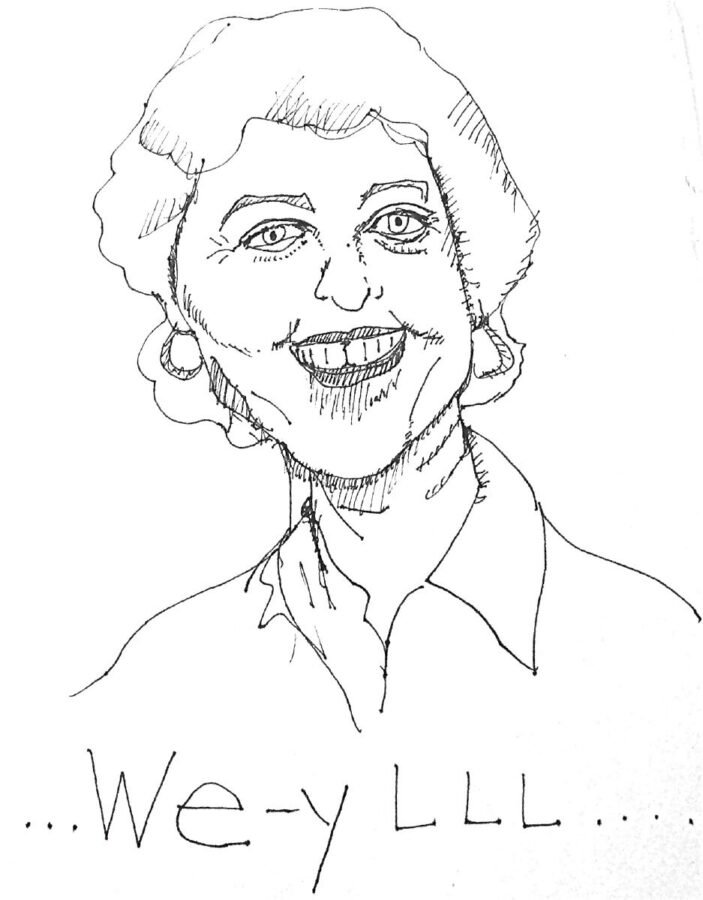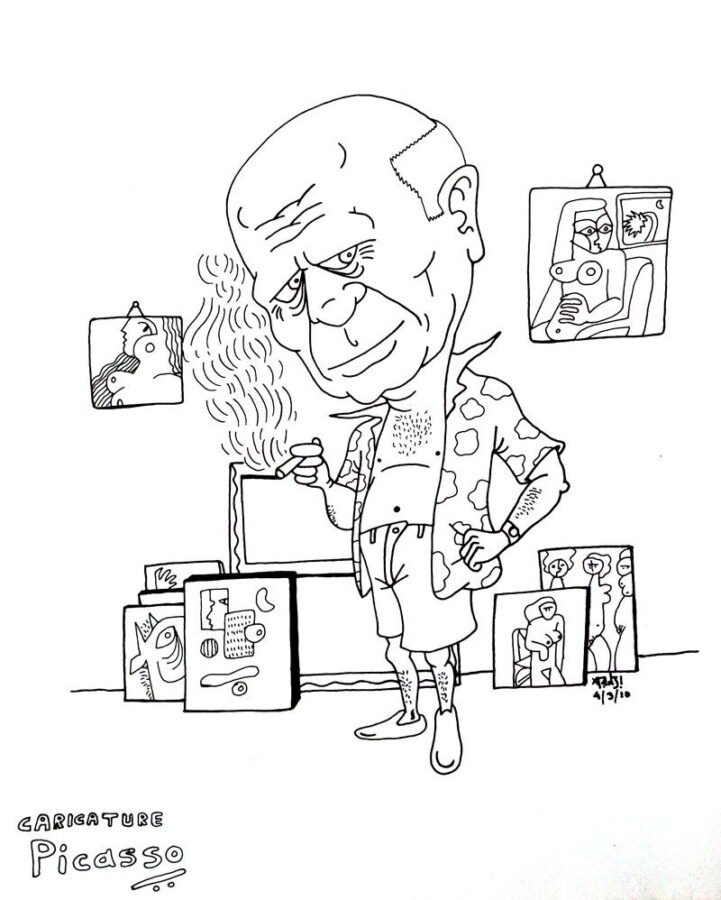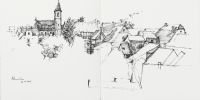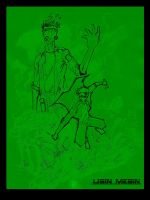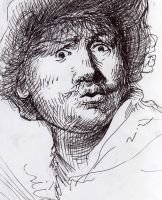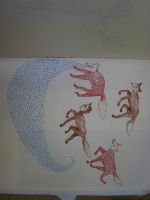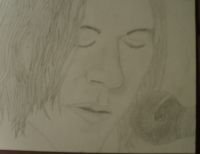Expressive caricature portraits are more than exaggerated drawings—they’re bold interpretations of personality, emotion, and character. From quick sketches at street fairs to refined studio pieces, caricature art blends humor, observation, and stylized technique to create portraits that speak louder than realism ever could. Whether you’re a seasoned illustrator or just exploring character design, learning to capture expression through caricature can elevate your artistic voice and make your work unforgettable.
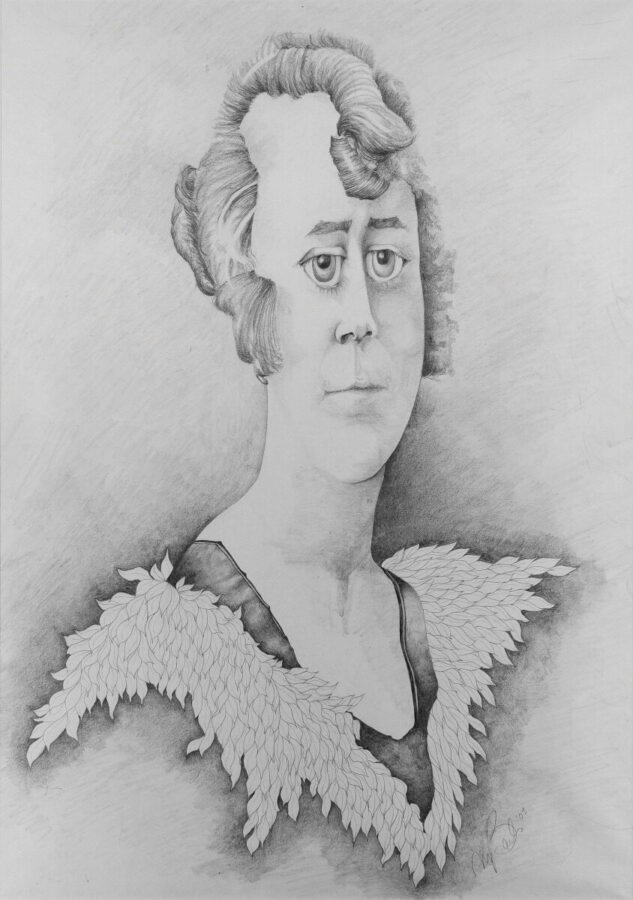
credit: MLBALLES
What Makes a Caricature Expressive?
At its core, a caricature is a portrait that exaggerates key features while preserving the essence of the subject. But expressive caricature portraits go further—they amplify emotion, gesture, and attitude. These drawings don’t just resemble someone; they reveal something deeper.
- Facial exaggeration: Enlarged eyes, elongated noses, or widened mouths highlight personality traits.
- Dynamic line work: Fluid, confident strokes convey energy and movement.
- Emotional storytelling: Expressions are pushed to extremes to evoke laughter, curiosity, or empathy.
- Stylized anatomy: Proportions are intentionally distorted to emphasize character.
Observing the Subject: The Key to Expression
Before pencil touches paper, observation is everything. Expressive caricature portraits begin with studying the subject—not just their face, but their mannerisms, posture, and mood.
Look Beyond the Surface
- Facial landmarks: Identify dominant features—strong jawlines, high cheekbones, or unique eyebrows.
- Micro-expressions: Subtle cues like smirks or squints can define personality.
- Body language: A slouched posture or animated hand gesture adds context to the face.
Capture the Essence
Ask yourself: What makes this person unique? Is it their mischievous grin, their furrowed brow, or their wide-eyed wonder? Your goal is to distill that essence into visual shorthand.
Sketchbooks.org | VISUAL RESEARCH HUB
Expressive Caricature Portrait Drawing
Visual research is critical for any creative endeavor. We have compiled specialized links to lead you directly to images, videos, and inspiration for "Expressive Caricature Portrait Drawing" across the web's best visual search platforms.
A Brief History of Caricature: From Da Vinci to Digital
Caricature has deep roots in the history of art, stretching back centuries before it became a staple of editorial cartoons and street sketches. Its evolution reflects not just artistic innovation, but also social commentary, satire, and the enduring human fascination with faces.
The Renaissance Origins
Leonardo da Vinci is often credited with some of the earliest explorations of exaggerated portraiture. In his notebooks, he sketched grotesque faces with distorted features—not to mock, but to study human variation and emotion. These drawings weren’t caricatures in the modern sense, but they laid the groundwork for expressive distortion as a tool for storytelling.
- Da Vinci’s grotesques: Studies of exaggerated physiognomy to explore character and mood.
- Observation over idealization: A shift from perfect symmetry to expressive individuality.
The Rise of Satirical Illustration
By the 17th and 18th centuries, caricature had become a powerful form of social and political critique. Artists like Giovanni Battista Tiepolo and Pier Leone Ghezzi in Italy, and later James Gillray and George Cruikshank in England, used caricature to lampoon public figures and comment on societal issues.
- Political cartoons: Exaggerated portraits of monarchs, politicians, and aristocrats.
- Social satire: Commentary on fashion, class, and behavior through visual humor.
These works were often published in pamphlets and newspapers, making caricature one of the earliest forms of mass visual media.
Caricature in the 19th and 20th Centuries
As printing technology advanced, caricature became more accessible and widespread. In France, Honoré Daumier elevated the form with his biting lithographs, targeting corruption and injustice. In America, Thomas Nast used caricature to shape public opinion during the Civil War and Reconstruction era.
- Editorial illustration: Caricature as a journalistic tool.
- Cultural influence: Shaping public perception through visual exaggeration.
By the 20th century, caricature had expanded into entertainment, with artists like Al Hirschfeld capturing Broadway stars in fluid, expressive line work, and Mort Drucker bringing caricature to pop culture through MAD Magazine.
The Digital Age and Beyond
Today, expressive caricature portraits thrive in both traditional and digital formats. Artists use tablets, styluses, and software like Procreate and Photoshop to create stylized portraits that blend classical technique with modern flair. Online platforms and social media have democratized the art form, allowing caricaturists to reach global audiences instantly.
- Digital caricature: Speed, flexibility, and global reach.
- Hybrid styles: Mixing realism, cartooning, and abstract expression.
From Da Vinci’s anatomical studies to today’s viral caricature reels, the art form continues to evolve—always rooted in the same impulse: to capture the truth of a person through exaggeration, emotion, and style.
Sketching Techniques for Expressive Caricatures
Start with Loose Thumbnails
Begin with quick, gestural sketches to explore proportions and exaggeration. Don’t worry about accuracy—focus on rhythm and flow.
Build Structure with Shapes
Use basic shapes to block out the head and features. Circles, ovals, and triangles help define exaggerated proportions while maintaining balance.
Push and Pull Features
Experiment with stretching or compressing facial elements. A large forehead might suggest intellect, while a tiny chin could imply timidity. These choices shape the narrative of your portrait.
Emphasize Expression
Eyes and mouths are the emotional anchors of the face. Tilt the eyebrows, widen the pupils, or curl the lips to amplify mood. Even subtle changes can dramatically shift the tone.
Refine with Confident Lines
Once your sketch feels solid, go over it with bold, intentional lines. Expressive caricature portraits thrive on clarity and conviction—avoid timid strokes.
Adding Personality Through Style
Your stylistic choices define the final impact of the caricature. Whether you lean toward cartoonish exaggeration or semi-realistic distortion, consistency is key.
Line Quality
Thick, varied lines add drama and depth. Thin, delicate lines suggest subtlety and elegance. Match your line work to the subject’s personality.
Color and Texture
Use color to highlight emotion—warm tones for energy, cool tones for calm. Textures like cross-hatching or watercolor washes can add richness and dimension.
Background Elements
A simple prop or setting can reinforce the character’s story. A chef’s hat, a guitar, or a cityscape behind the figure adds context without clutter.
Common Mistakes to Avoid
- Over-exaggeration: Too much distortion can lose the likeness entirely.
- Symmetry obsession: Faces are naturally asymmetrical—embrace it.
- Ignoring emotion: A technically strong caricature without expression feels flat.
- Rushing the sketch: Take time to observe and plan before committing to final lines.
Practice Ideas for Artists
- Sketch strangers from memory after brief observation.
- Draw famous faces from different angles and moods.
- Create caricatures of yourself in various emotional states.
- Use timed exercises to loosen up and build speed.
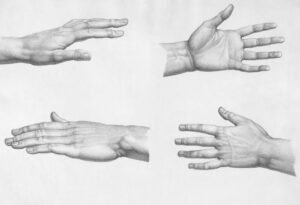
Sketchbooks.org | SUBJECT MATTER
Draw an Expressive Hand | Capture Emotion Through Dynamic Gestures and Anatomy
Why Drawing Expressive Hands Matters Hands are among the most expressive parts of the human body. They can convey tension, tenderness, power, or vulnerability—all without a single word. To draw an expressive hand is to...
Frequently Asked Questions
What is an expressive caricature portrait?
It’s a stylized drawing that exaggerates features and emotions to capture personality.
How do I choose which features to exaggerate?
Focus on the most dominant or unique aspects of the face—eyes, nose, mouth, or jawline.
Can I make caricatures without losing likeness?
Yes, the goal is to distort while preserving recognizable traits and essence.
What tools are best for caricature sketching?
Pencils, waterproof pens, and digital tablets all work—choose what suits your style.
How do I improve facial expression in my drawings?
Study real faces, practice gesture drawing, and push emotional extremes in your sketches.
Should I use color in caricature portraits?
Color adds mood and emphasis but isn’t required—strong line work can stand alone.
Is caricature art only for humor?
Not at all—it can be serious, emotional, or satirical depending on your intent.
How long should a caricature take to draw?
Anywhere from 10 minutes to an hour, depending on complexity and style.
Can I use caricature in character design?
Absolutely—caricature principles are foundational in animation and concept art.
What’s the best way to practice caricature drawing?
Draw often, observe deeply, and experiment with exaggeration and expression.
Final Thoughts
Expressive caricature portraits are a celebration of individuality. They invite us to see beyond symmetry and realism, to embrace the quirks and emotions that make us human. Whether you’re sketching for fun, performance, or professional work, caricature art challenges you to observe more deeply and draw more boldly. From sketch to statement, each portrait becomes a mirror—not of how someone looks, but of who they are.
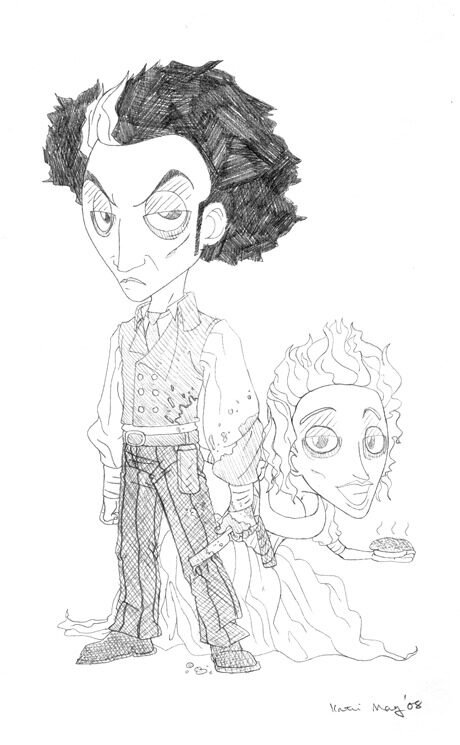
credit: KAT
Ready to Share Your Work?


